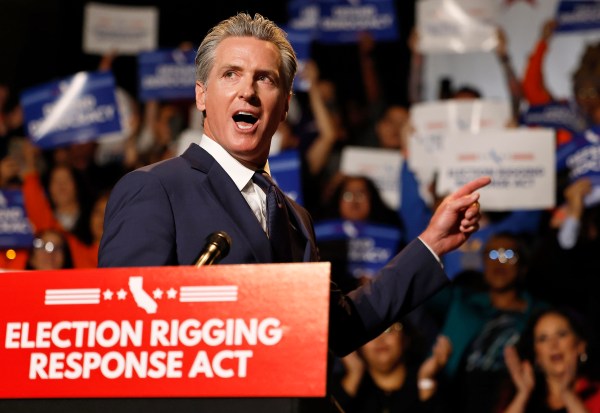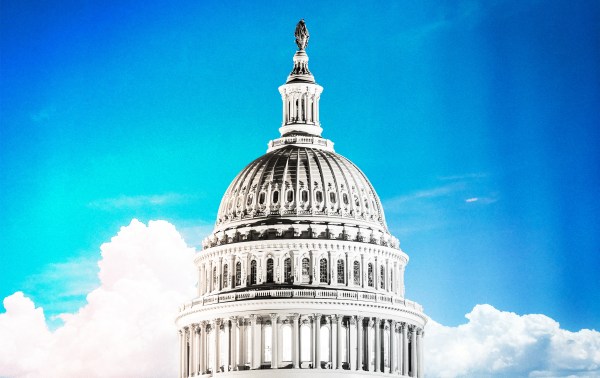It’s no surprise that parents are outraged at public schools teaching “critical race theory” (CRT)—or whatever term one prefers for the fashionable notions that America is systemically racist and that the solution is to treat people differently based on skin color. Taxpayers, after all, typically expect the schools they pay for to teach kids history, science, literature, and math—not to indoctrinate them into false and destructive political dogmas.
Many school bureaucrats deny that these notions are being taught in classrooms, but they are. Former teacher Kali Fontanilla—to cite just one example—recently revealed how schools in her home state of California are “hyper race-focused,” with social science classes centered around teaching that “America was built to only help the white man.” Curricula rooted in CRT dispense with historical facts, and aim instead at instructing black students that capitalism, private property rights, the constitutional rule of law, and other elements of American democracy are inherently biased against them, so that nothing short of a radical overhaul of government and culture can enable them to succeed. White students, on the other hand, are taught that whatever success their families have attained is merely a consequence of undeserved “privilege,” for which they must atone. (As for Asian students, they’re effectively ignored.)
Detroit Schools Superintendent Nikolai Vitti said at a board of education meeting last fall, “our curriculum is deeply using critical race theory,” not just in history and social science, but in “the other disciplines,” and that the effort was “intentional.” That only makes sense: It’s hard to see how an English teacher’s lesson plan would be unaffected by the notion that “worship of the written word” is “characteristic of white supremacy,” or how a science instructor could teach physics if she believes “either/or thinking” and “objectivity” are racist.
The sad truth is that these ideas are themselves both racist and debilitating. They’re racist because they presume—indeed, overtly declare—either that all white people believe or act in certain ways, or that virtues such as objectivity and professionalism are by definition white characteristics. And they’re debilitating because they lead students to conclude that the cultural and social patterns arising from such concepts as individual rights or the rule of law are inevitably oppressive. Simply put, the most important part of the CRT formula is the word systemic. When America is alleged to be systemically racist, the system in question is capitalist liberalism, if not Western civilization itself. Overturning that “system” is CRT’s imperative.
The consequence of teaching this in schools is to inculcate in pupils either a sense of helpless despair or bitter and dangerous resentment against a target described vaguely enough that political leaders can train it against whatever they want. In 1946, psychologist Viktor Frankl warned against what he called “learned meaninglessness,” resulting from the “nihilism transmitted on many an academic campus,” which can either sap a student’s will to achieve or boil over into violent rage that demagogues can harness to their will. But Frederick Douglass beat Frankl to it by half a century, when he denounced black politicians who argued that America was so hopelessly racist that black Americans should emigrate to Africa. Such “nonsense,” he warned,
tends to throw over the negro a mantle of despair. It leads him to doubt the possibility of his progress as an American citizen…. Its tendency is to make him despondent and doubtful, where he should be made to feel assured and confident. It forces upon him the idea that he is forever doomed to be a stranger and a sojourner in the land of his birth…. With such ideas constantly flaunted before him, he cannot easily set himself to work to better his condition in such ways as are open to him here.
CRT’s grip on public schools has not only sparked understandable fury, but has also inspired efforts by state lawmakers to rein in such propagandizing. There’s no doubt that legislators can do this—courts have ruled that “the First Amendment does not protect primary and secondary school teachers’ in-class curricular speech”—but there is a legitimate debate over how this is best done. David French and others have warned that if such anti-CRT bills are written in vague terms, they risk stifling legitimate educational goals, and that’s true. Oklahoma’s recently adopted HB 1775 prohibits teachers from “mak[ing] part of a course” the “concept” that “one race or sex is inherently superior to another,” which could arguably forbid everything from Shakespeare to the novels of Zora Neale Hurston. On the other hand, a proposal such as Alaska’s HB 343, which prohibits officials from “compelling a school employee to affirm … that an individual, by virtue of their sex, race, ethnicity…[etc.] is inherently racist, sexist, or oppressive,” is not only narrow enough to pass constitutional muster, but would impose a common-sense limit on how public servants use their power and our money.
But whatever one thinks of that debate, there is an alternative: transparency. Public schools are creatures of the state, and parents have a right to know what is being taught to their children. Allowing them to examine the teaching materials used in classrooms—CRT-related or otherwise—helps parents to know how their public schools are operating, and empowers them to make better choices, not only about whether to speak up at school board meetings, but about other things: whether to hire a tutor, for example, or whether to have a family discussion about a sensitive subject being addressed in a class. Transparency encourages the kind of involved parenting teachers often claim to want.
Efforts are now underway in 24 states to require public schools to make publicly available a list of the books, videos, or other materials that teachers present to students. These requirements are minimally invasive—a simple list of the materials (disclosing the title, author, and/or internet link for each) posted on a website would typically suffice, and teachers could still introduce new items at the last minute, as long as they promptly update the disclosure list. Yet CRT proponents have attacked the very concept of transparency, claiming that it will stifle classroom discussions. The ACLU, for example—which used to be a prominent defender of government transparency, and still has a section on its website devoted to the subject—issued a statement condemning these proposals for “chilling” free speech in the classroom. The leftist PEN America has called them downright “censorious.”
These accusations are obviously absurd: For one thing, transparency doesn’t mean schools can’t teach sensitive topics. When a group in Tennessee objected to a lesson plan that taught Ruby Bridges Goes to School: My True Story and Martin Luther King’s “I Have a Dream” speech, the state’s education board rejected the complaint, and rightly so. But more importantly, teachers employed by the government have no constitutional right to tell students whatever they wish; they’re required to obey curriculum rules set by local and state laws. Parents, by contrast, do have a fundamental constitutional right to oversee their children’s upbringing. Only someone who thinks schools exist to rescue kids from their own parents could object—as the 1619 Project’s Nikole Hannah-Jones recently did—to “the idea that parents should decide what’s being taught.”
CRT proponents do, in fact, think that. CRT is an activist mindset, not a scholarly theory—as education expert Jonathan Butcher recently observed, it’s “meant to be applied … it’s not just an idea; it’s effectively a verb.” Its principal aim is to take white kids from their inevitably racist households and transform them into new, more “woke” citizens, while conscripting black students into cultural and political activism—and even violence. A century ago, the progressive President Woodrow Wilson said that the ideal school would “make a son as unlike his father as possible,” and while today’s progressives would eschew Wilson’s gendered language, they still embrace his sentiment. Most parents, however, would prefer schools to equip students with the knowledge necessary to pursue their own happiness, rather than propagating historical falsehoods to recruit kids into a radical political movement. That’s why CRT advocates such as Hannah-Jones view transparency requirements as a threat. Actual scholars propounding genuine scholarly theories typically welcome publicity and discussion. But publicity is the last thing CRT’s partisans want.
Of course, there are some parents who would prefer that their children’s education emphasize CRT or multiculturalist ideas—and transparency requirements would help these parents, too, since it would enable them to decide whether their public schools are devoting sufficient time to these doctrines; if not, they could choose schools such as the New Concept Development Center, the Sovereign Community School, or the Social Justice School. But that’s not enough to satisfy CRT activists, who view themselves on a mission to fundamentally alter the American nation. The easiest way to do that is to change public school curricula into taxpayer-funded propaganda, with as little oversight from parents as possible.
When it’s convenient to do so, the left claims that democracy dies in darkness. But when it comes to CRT, they prefer to keep such matters from parents. That’s doubtless because they know their doctrines are extraordinarily unpopular, even among non-whites, and that if given the choice, parents would rather their kids be taught that whatever cruelties their ancestors suffered, and whatever obstacles they themselves may face, they can rise through objectivity, professionalism, determination, and other virtues. That, after all, is the truth.
Timothy Sandefur is vice president for litigation at the Goldwater Institute, which has authored the academic transparency legislation discussed in this article.






Please note that we at The Dispatch hold ourselves, our work, and our commenters to a higher standard than other places on the internet. We welcome comments that foster genuine debate or discussion—including comments critical of us or our work—but responses that include ad hominem attacks on fellow Dispatch members or are intended to stoke fear and anger may be moderated.
With your membership, you only have the ability to comment on The Morning Dispatch articles. Consider upgrading to join the conversation everywhere.